Exploring Northern Saitama: A Journey Into Traditional Japanese Cuisine, Craftsmanship, and Nature
features
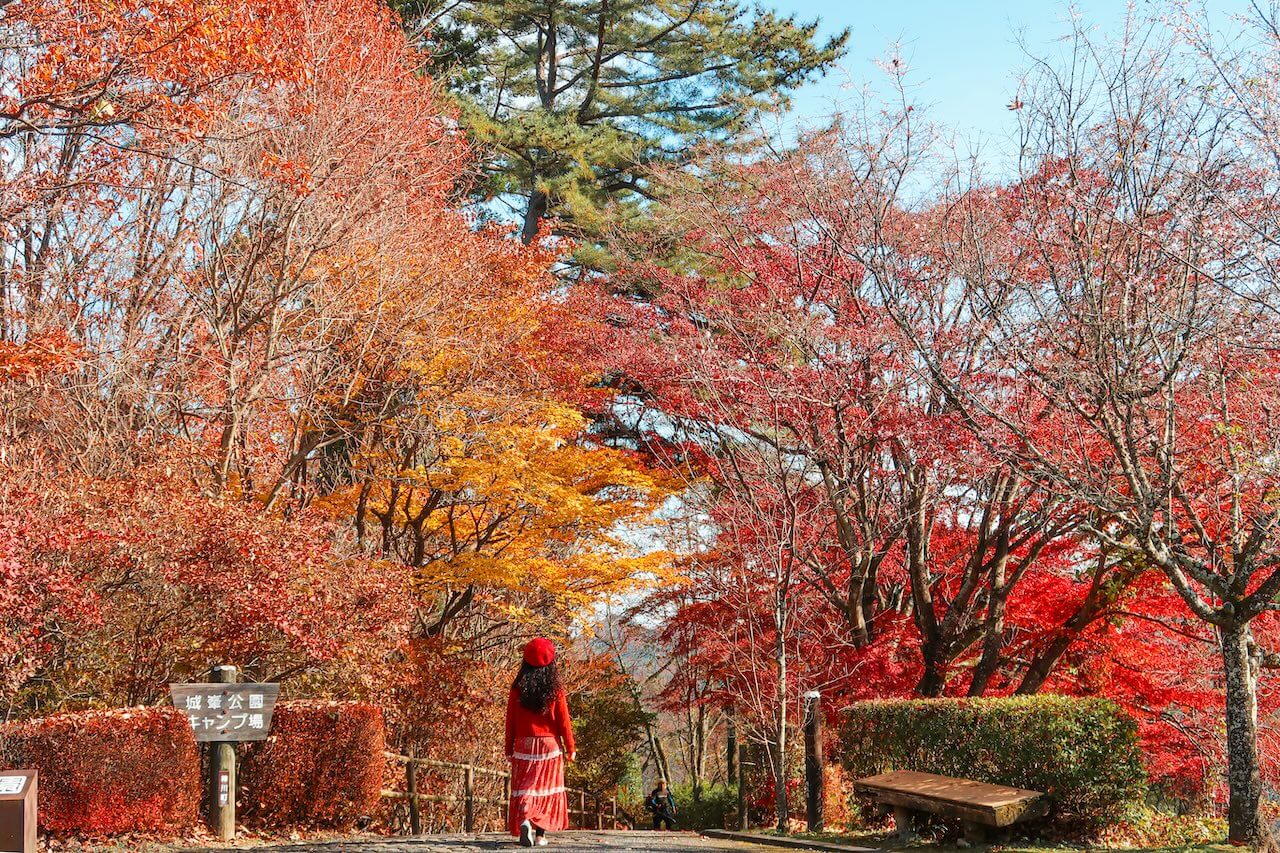
Nestled at the northernmost tip of Saitama Prefecture, just 80 kilometers from the heart of Tokyo, the towns of Kamikawa and Kodama form a region rich in natural wonders, tradition, cuisine, and craftsmanship. Surrounded by mountains, crystal-clear streams, and fertile farmland, this serene countryside offers a harmonious blend of nature and culture. Visitors can marvel at rare winter cherry blossoms in Jomine Park, explore history at the ancient Kanasana Shrine, and enjoy hands-on experiences like organic soy sauce and tofu-making at Yamaki Brewery. This charming corner of Saitama will deepen your appreciation for Japanese traditions!
Updated on:2025.02.18
Jomine Park - Where Rare Winter Cherry Blossoms Meet Autumn Leaves
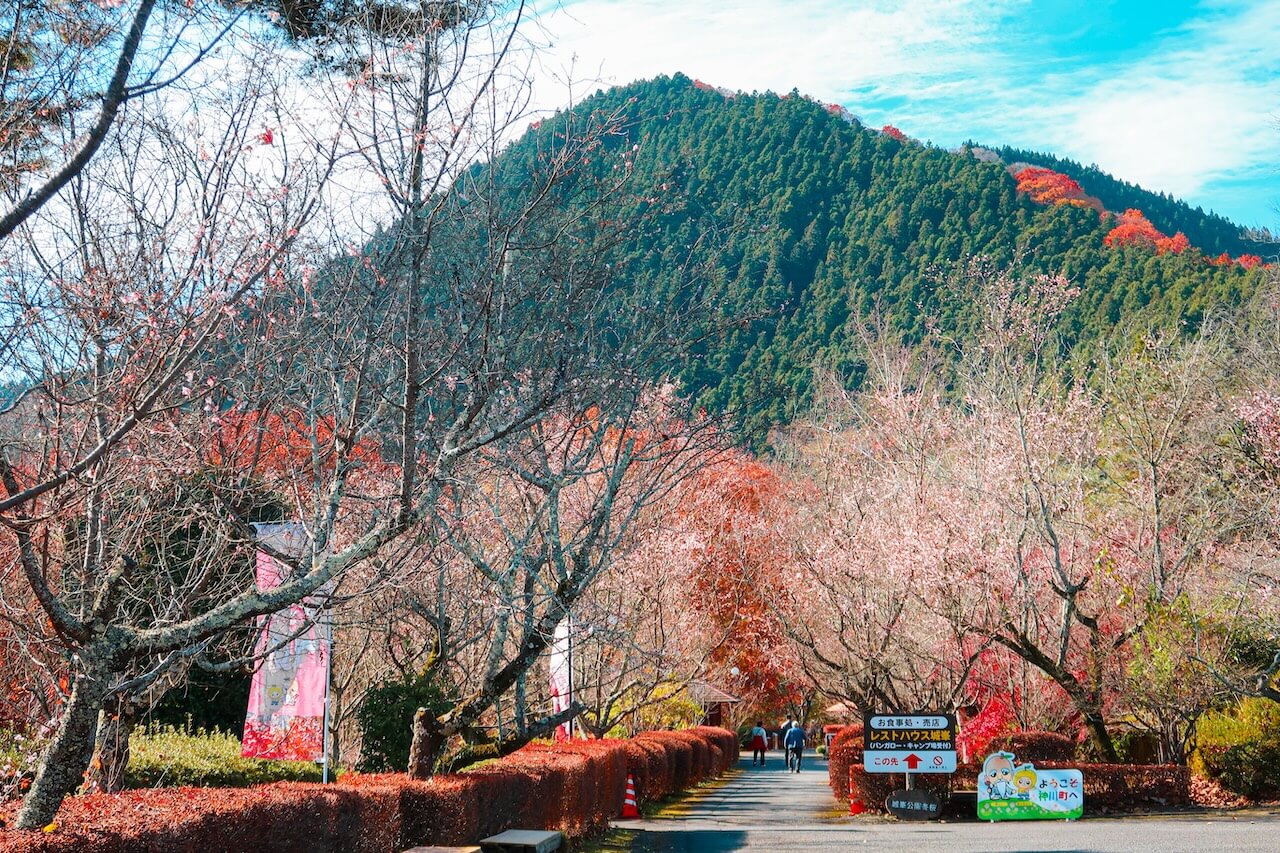
Perched 500 meters above sea level on the tranquil slopes of Mt. Kamiyama, Kamikawa’s Jomine Park is a breathtaking escape where nature creates an unparalleled spectacle. This hidden gem in Saitama Prefecture captivates visitors with its rare blend of seasons, offering a mesmerizing display of winter cherry blossoms, also known as “October cherry blossoms,” blooming together with the vivid crimson hues of autumn leaves.
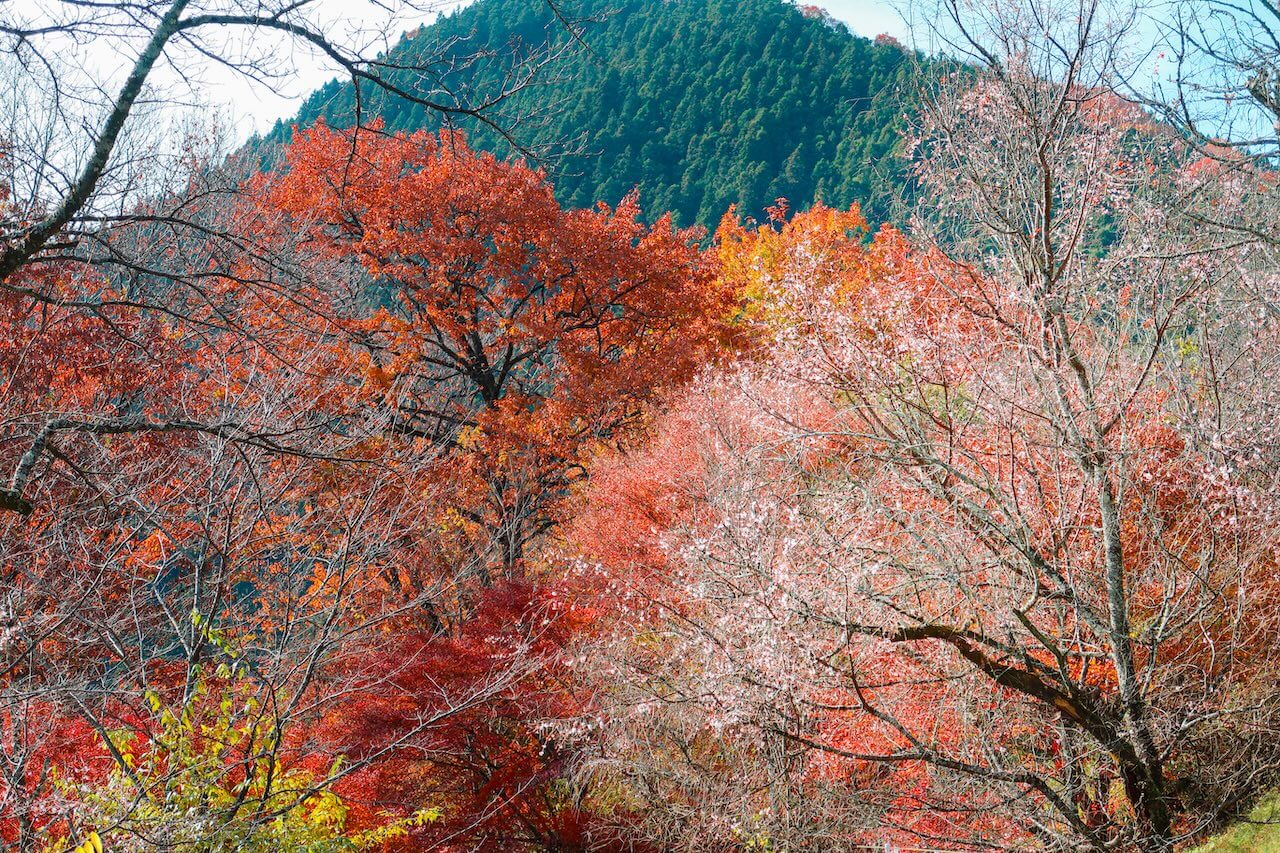
From late October to early December, the park’s 600 winter cherry trees burst into bloom, their delicate pale pink flowers scattered gently along scenic paths. The blossoms provide an exquisite contrast with the fiery red and orange tones of autumn maples, creating a scene so striking and magical it feels as though you’ve stepped into a painting.
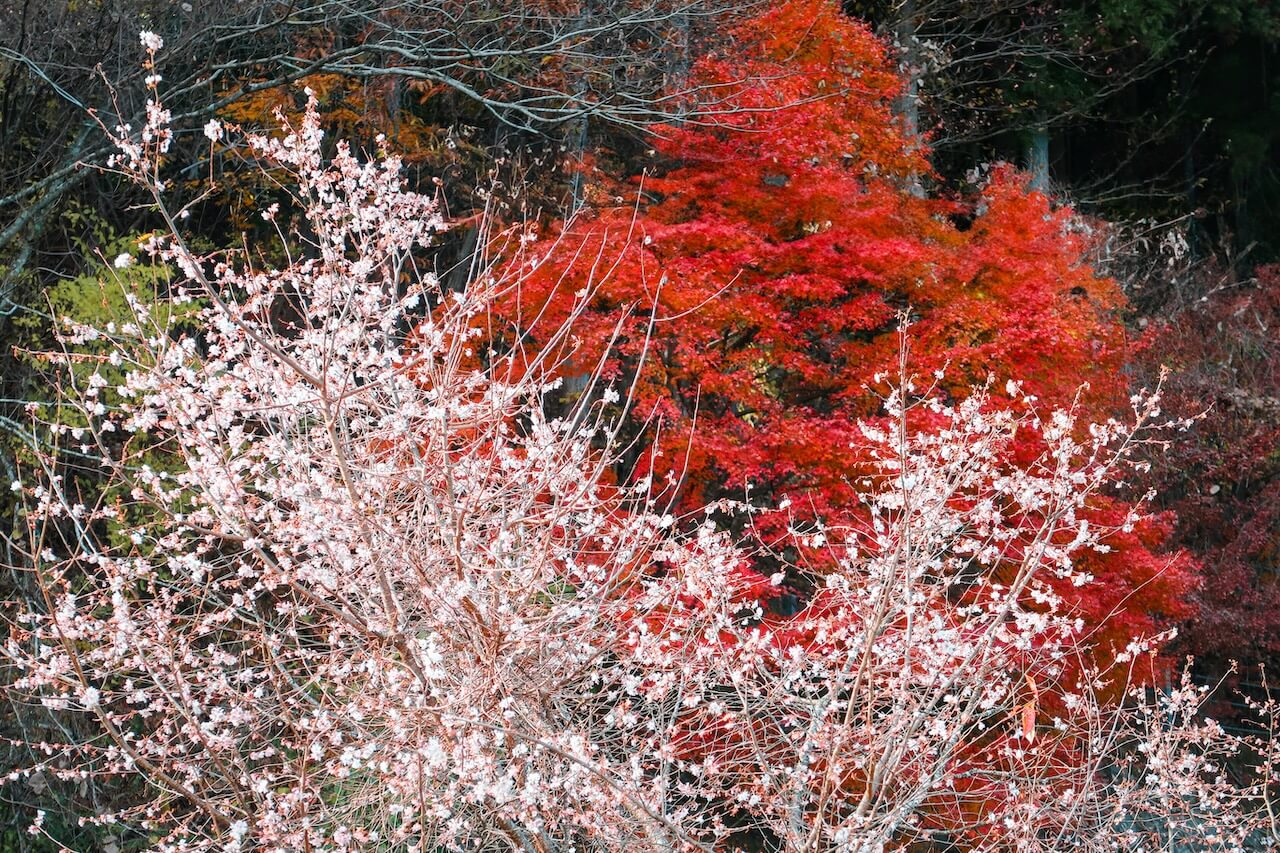
As the sun sets, the park transforms into an even more enchanting wonderland, with nighttime illuminations casting an ethereal glow on the cherry blossoms and autumn leaves. This fantastical blend of light, color, and nature makes Jomine Park an unforgettable destination.
For a truly enchanting experience, visit during the Winter Cherry Blossom Festival, held annually on the last Sunday of October. This vibrant event brings the park to life with the flavors of local cuisine, specialty goods, and lively entertainment, drawing travelers and locals alike to celebrate the charms of this unique season.
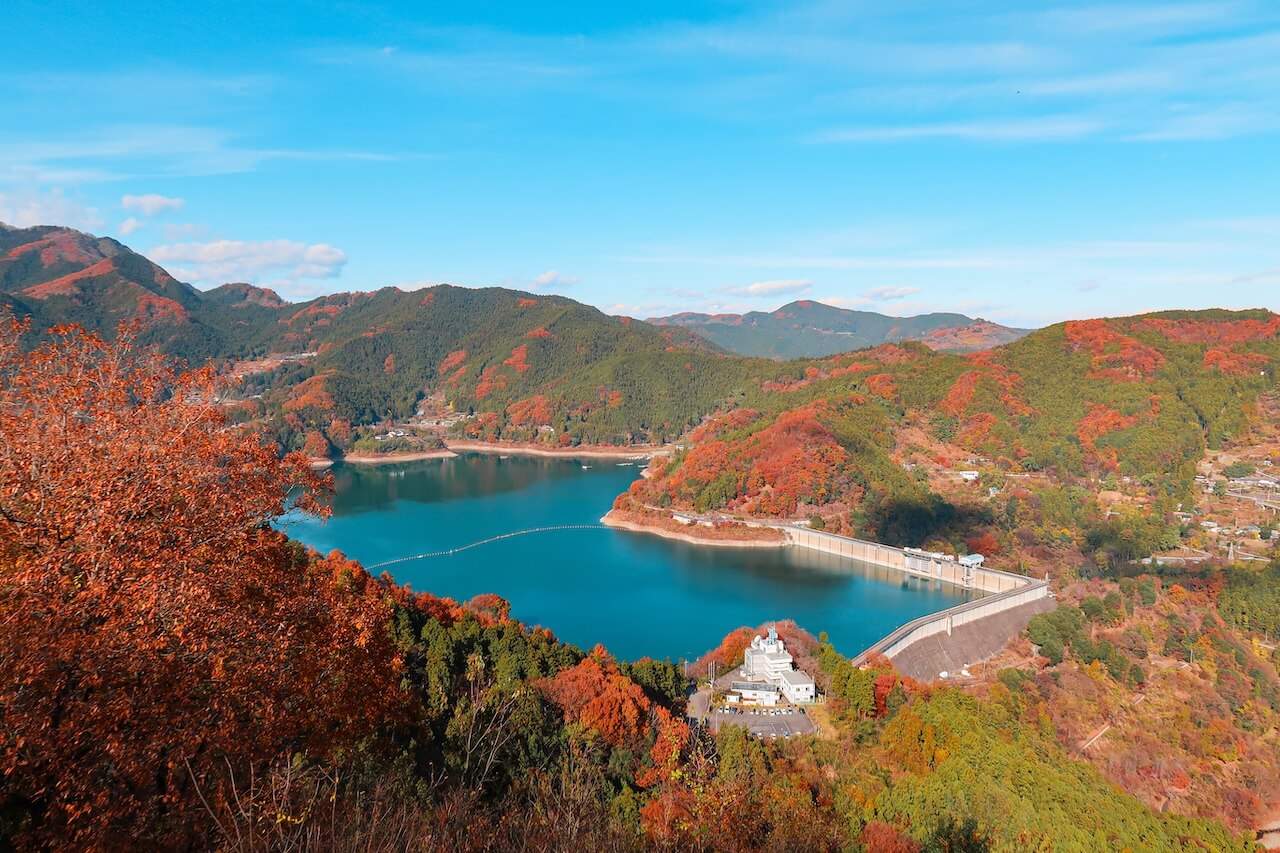
While its winter cherry blossoms are the star attraction, Jomine Park is a destination for all seasons. In spring, the landscape transforms with the blooming of “yaezakura” cherry blossoms and vibrant azaleas, making it an ideal spot for flower lovers. The park is also equipped with plenty of amenities, including a campground with 16 spacious bungalows, tent sites, and a BBQ house.
Jomine Park also boasts several observation decks with incredible views of the surrounding landscapes. To the north lies Lake Kanna and Shimokubo Dam, whose unique L-shaped structure and 129-meter vertical drop make it a must-see attraction. In autumn, the lake’s azure waters are framed by brilliant fall foliage, providing a picture-perfect backdrop for photos.
Address:
1277, Yano, Kamikawa-machi, Kodama-gun, Saitama
Access:
From the South Exit of Honjo Station on the JR Takasaki Line, take a bus bound for Kamiizumi Sogo Shisho for about 45 minutes to “”Kamiizumi Sogo Shisho Mae.”” Then, transfer to the town-operated bus “”Fuyuzakura no Yado Kamiizumi”” and ride for about 15 minutes to Jomine Park.
Yamaki Brewery - A Legacy of Tradition, Sustainability, and Flavor
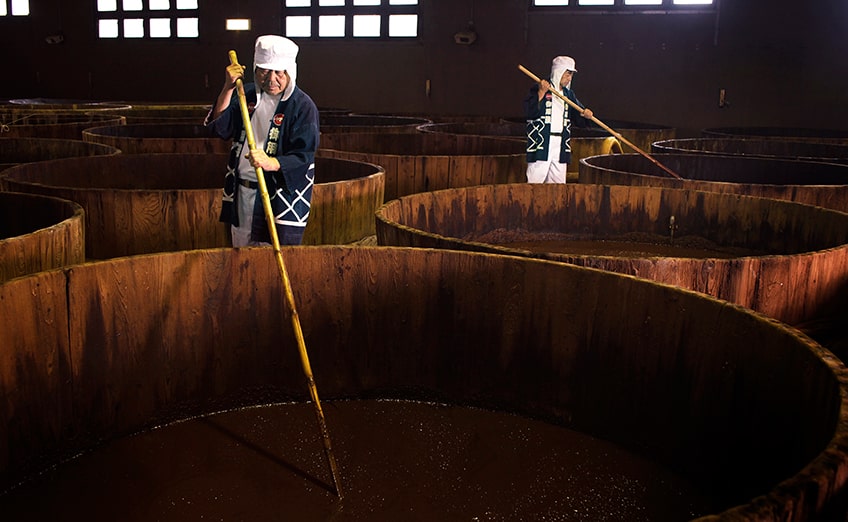
In the picturesque Kamikawa district is also Yamaki Brewery, a family-run business founded in 1902. The brewery is dedicated to producing organic miso, soy sauce, and tofu, all while prioritizing sustainable practices and preserving the natural environment. With its focus on traditional brewing techniques and locally sourced ingredients, Yamaki Brewery embodies a philosophy of harmony between humans and nature.
The brewery’s proximity to Kamikawa’s famous spring water is crucial to its craft, providing the pure, crisp water essential for creating its signature products. Surrounded by nature’s bounty, this region offers the perfect environment for producing high-quality natural food.
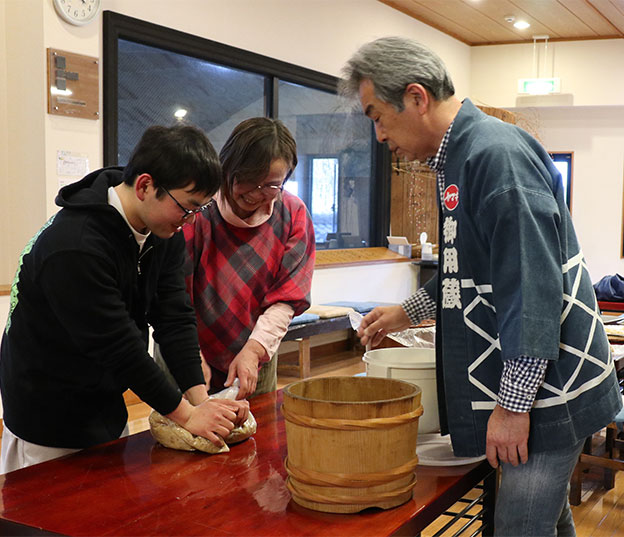
Yamaki Brewery’s commitment to preserving Japan’s culinary heritage is rooted in its belief in the importance of fermentation, with fermented foods like miso and soy sauce being key elements of “washoku” Japanese cuisine, a UNESCO Intangible Cultural Heritage.
Visitors can experience this rich tradition firsthand through a variety of hands-on activities. The Soy Sauce Mash Warehouse Tour offers a glimpse into the fermentation process, while the Soy Sauce Pressing Experience lets guests squeeze fresh soy sauce and savor its fragrant aroma. The Tofu-Making Workshop provides the opportunity to cook and taste warm, freshly made tofu.
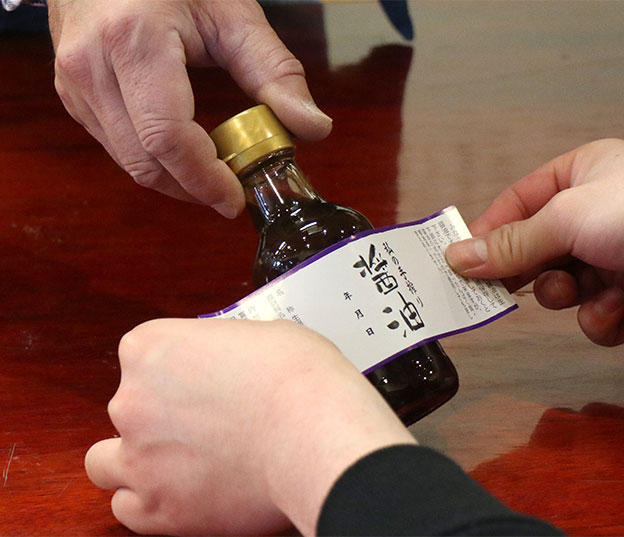
In winter, the brewery also hosts a Miso-Making Experience, where participants create their own organic miso. Additionally, the Farm School Experience invites travelers to harvest seasonal vegetables grown on-site using eco-friendly practices.
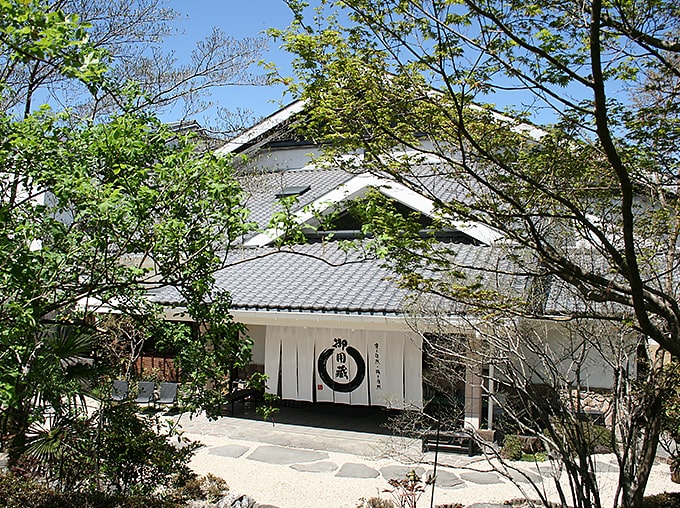
After exploring the brewery, we recommend a light meal at Kojian, Yamaki’s direct sales store and café, located next to the brewery. Kojian offers a variety of Yamaki Brewery’s signature products, including miso, soy sauce, tofu, and pickles that make perfect souvenirs.
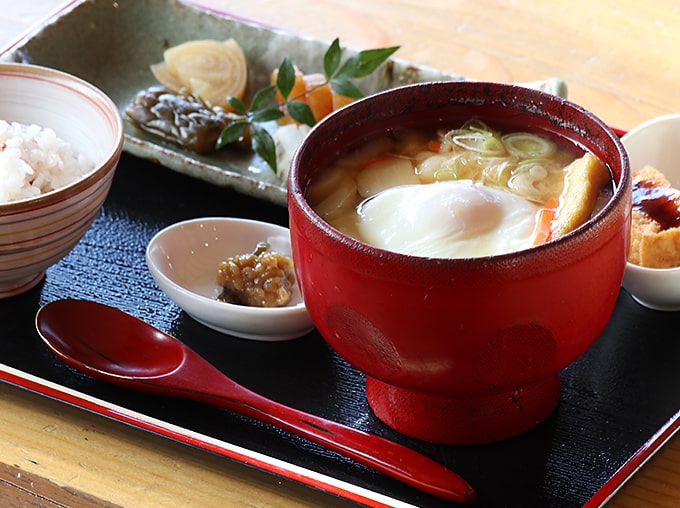
The café serves meals showcasing the best of these products, such as the “Toan Soup Set,” which includes miso soup made with Yamaki Brewery’s fresh miso and tofu, accompanied by deep-fried tofu and a selection of side dishes. Coffee and desserts are also on the menu, making this cafe the perfect spot to relax after a tour.
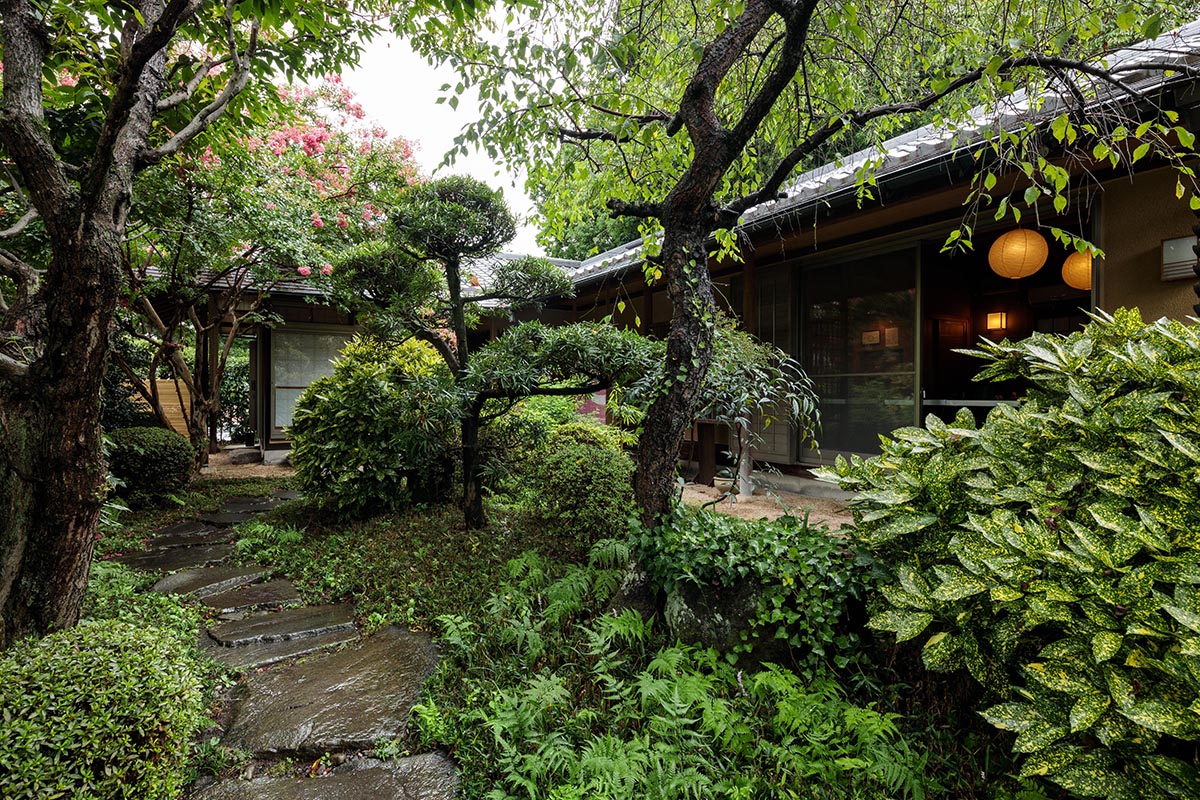
For a more refined experience, Yuba Café Shisuian provides a distinctive culinary adventure centered around “yuba,” tofu skin made each morning with soy milk produced from Kamikawa’s prized water and organic domestic soybeans.
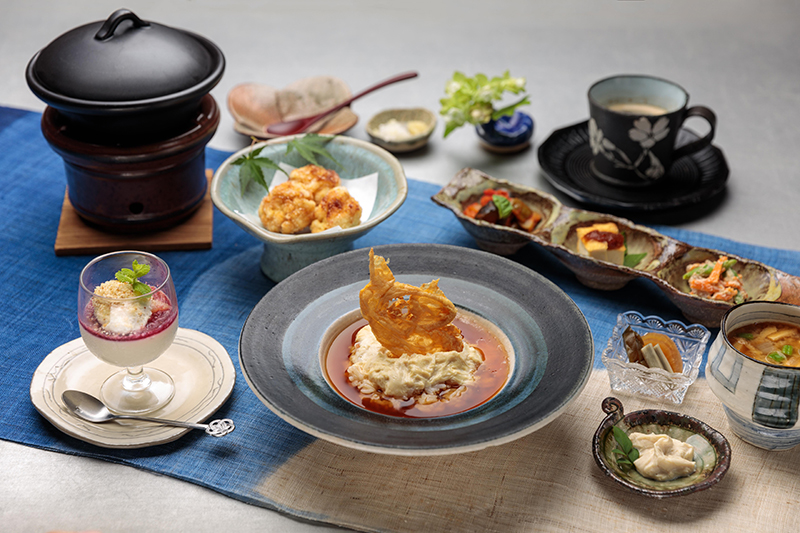
This traditional Japanese flavor is then arranged into modern café-style dishes, bolstered by fermented seasonings from Yamaki Brewery. Loved for its relaxing atmosphere, Shisuian is another popular spot for visitors to unwind and enjoy a leisurely tea time.
Address: 955, Oaza Shimo Aguhara, Kamikawa-machi, Kodama-gun, Saitama
Access: From the South Exit of JR Takasaki Line, Honjo Station, take the Asahi Bus for about 40 minutes. Alternatively, from Tansho Station Entrance Bus Stop on the JR Hachiko Line, take the Asahi Bus for about 20 minutes. Get off at the terminal bus stop “”Kamikawa-machi Kamiizumi Sogo Shisho”” and walk for 2 minutes.
English Website:
https://saitama-supportdesk.com/restaurant/post-13777/
Kanasana Shrine - A Sacred Site Preserving an Ancient Form of Shinto
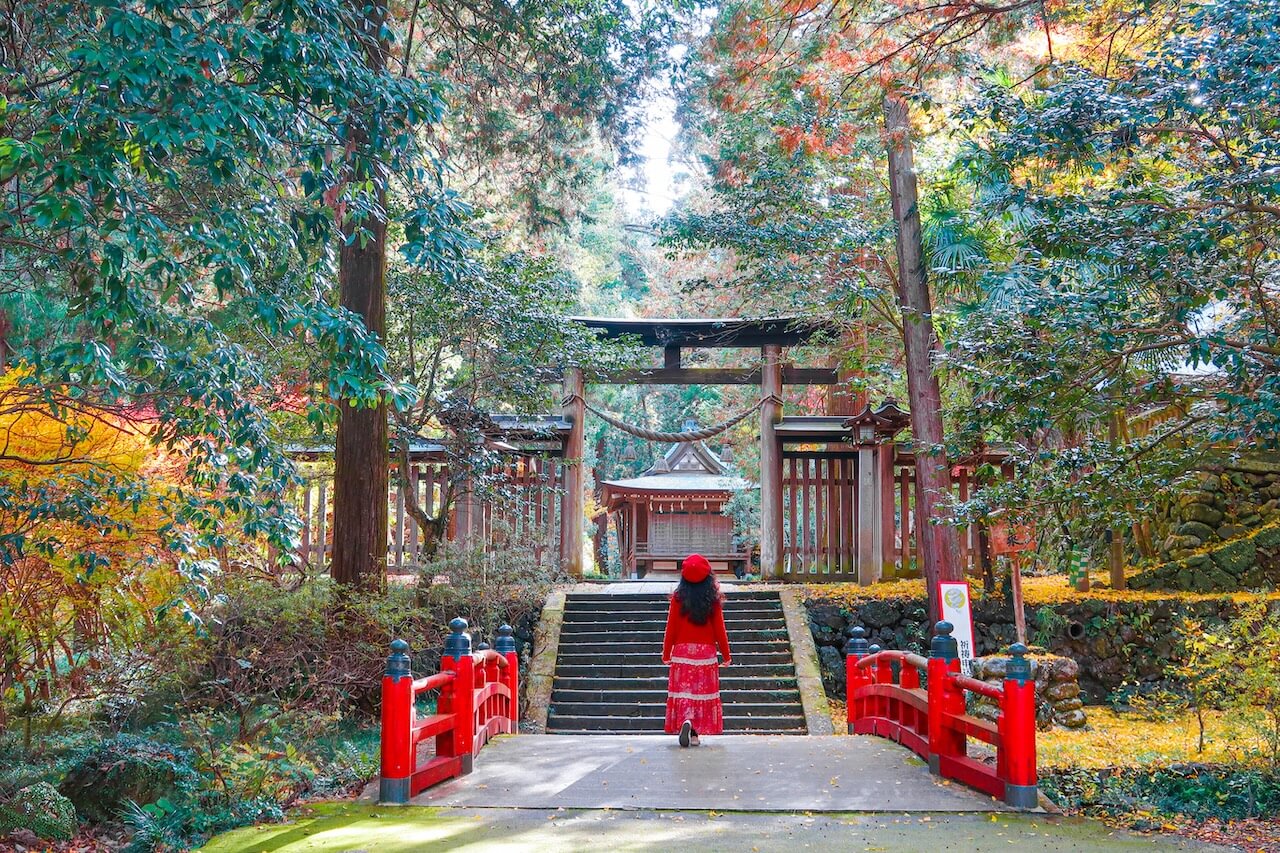
Kamikawa’s Kanasana Shrine is one of Saitama Prefecture’s most historically significant and spiritually unique Shinto shrines. Dedicated to the sacred Mount Omuro, this shrine preserves a unique form of primitive Shinto worship with no main hall—a rarity shared by only two other shrines in Japan: Omiwa Shrine in Nara and Suwa Taisha in Nagano. Instead, worship is directed toward the mountain itself, reflecting Japan’s ancient reverence for nature.
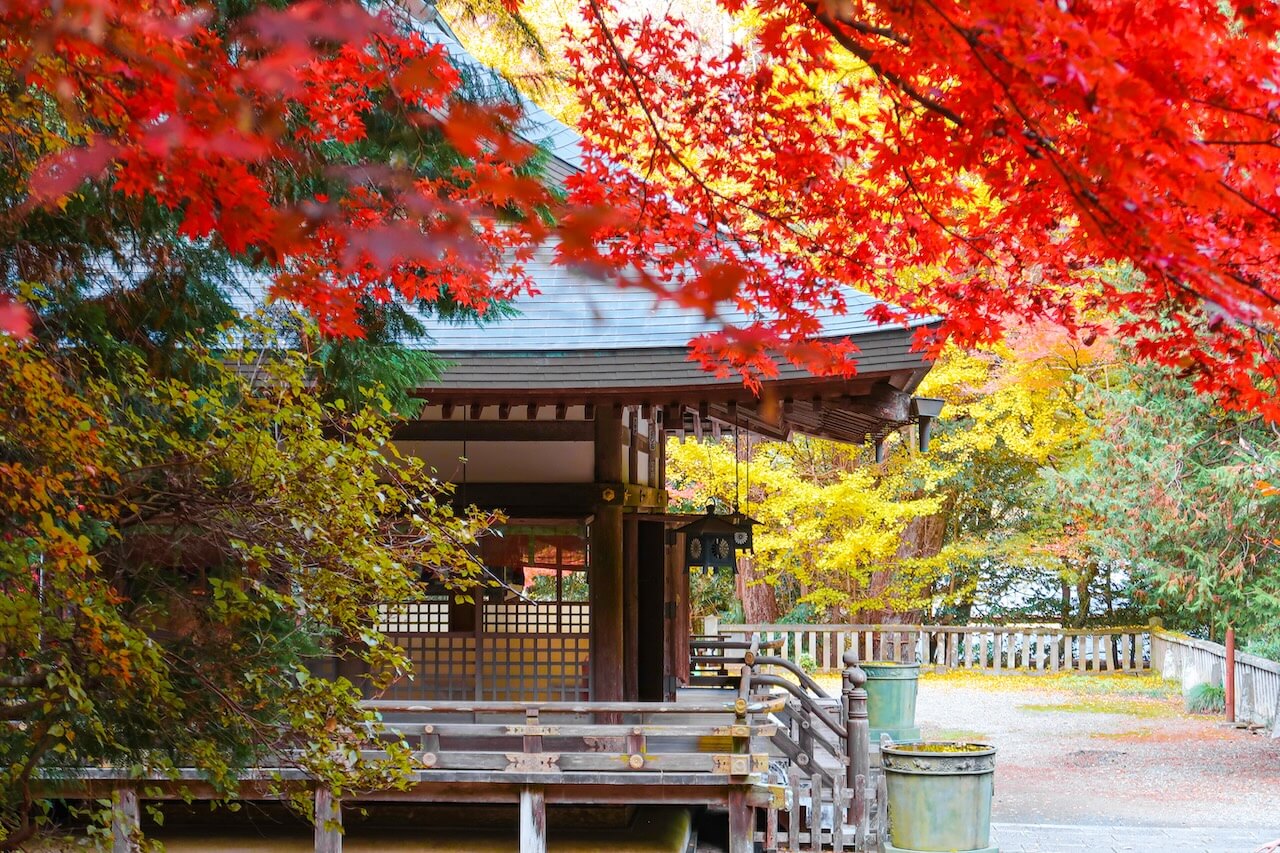
Said to have been founded around the year 111, Kanasana Shrine is steeped in the legend of Yamato Takeru, a heroic figure in Japanese mythology. The shrine is believed to have been established when Yamato Takeru hid his fire-making tools on Mount Omuro during his expedition to eastern Japan, imbuing the site with mythic significance. Kanasana Shrine is also dedicated to the sun goddess Amaterasu and her brother Susanoo, adding to its spiritual importance.
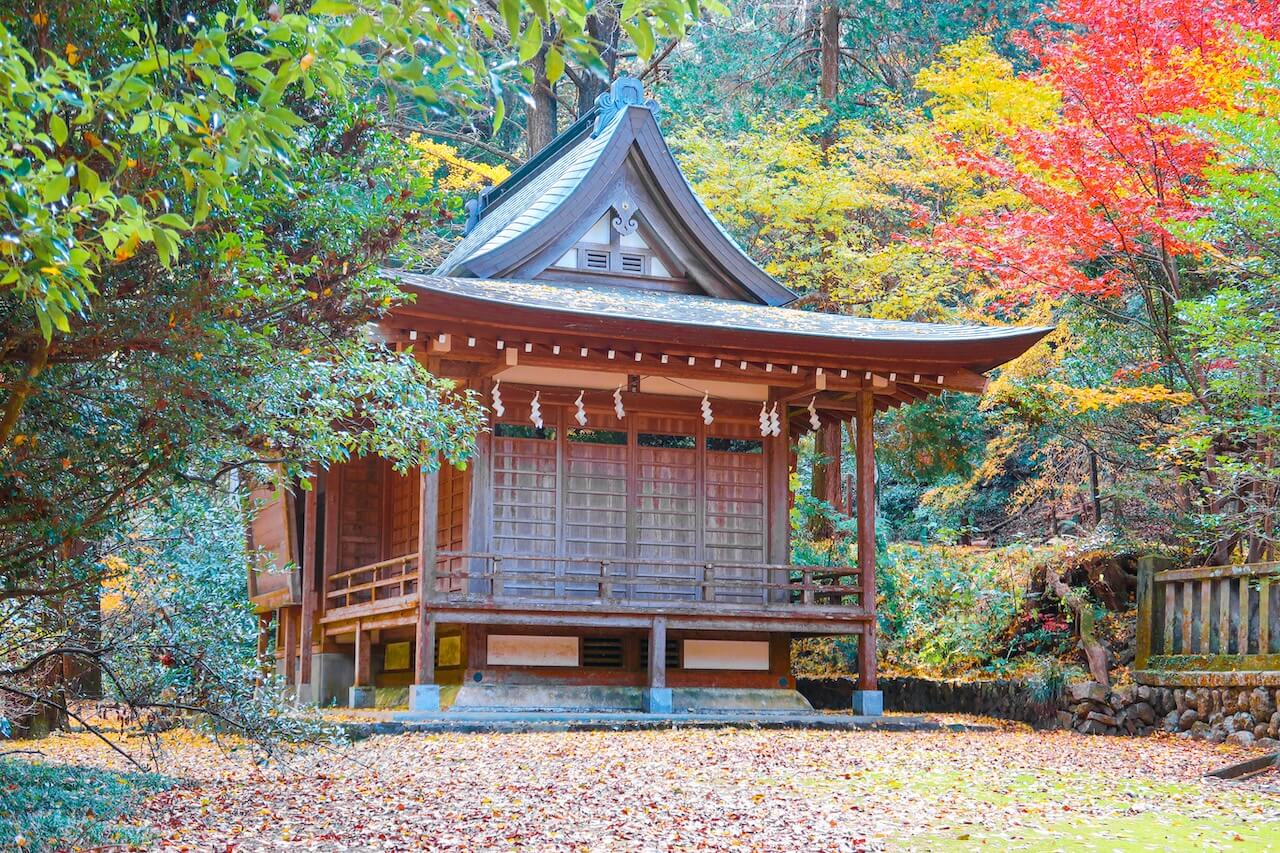
With its beautiful wooden buildings tucked away inside the wilderness, the shrine complex is a harmonious blend of human craftsmanship and natural splendor. One of its most striking features is the vermilion bridge, stretching over lush vegetation and leading to the stone “torii” gate marking the shrine’s entrance. As you cross the bridge and step into the sacred space, you’ll feel as though you’ve entered a scene from a Ghibli movie, where nature and spirituality intertwine.
Within the shrine grounds is also a stage where a unique type of Shinto ceremonial dance called “kagura” is performed.
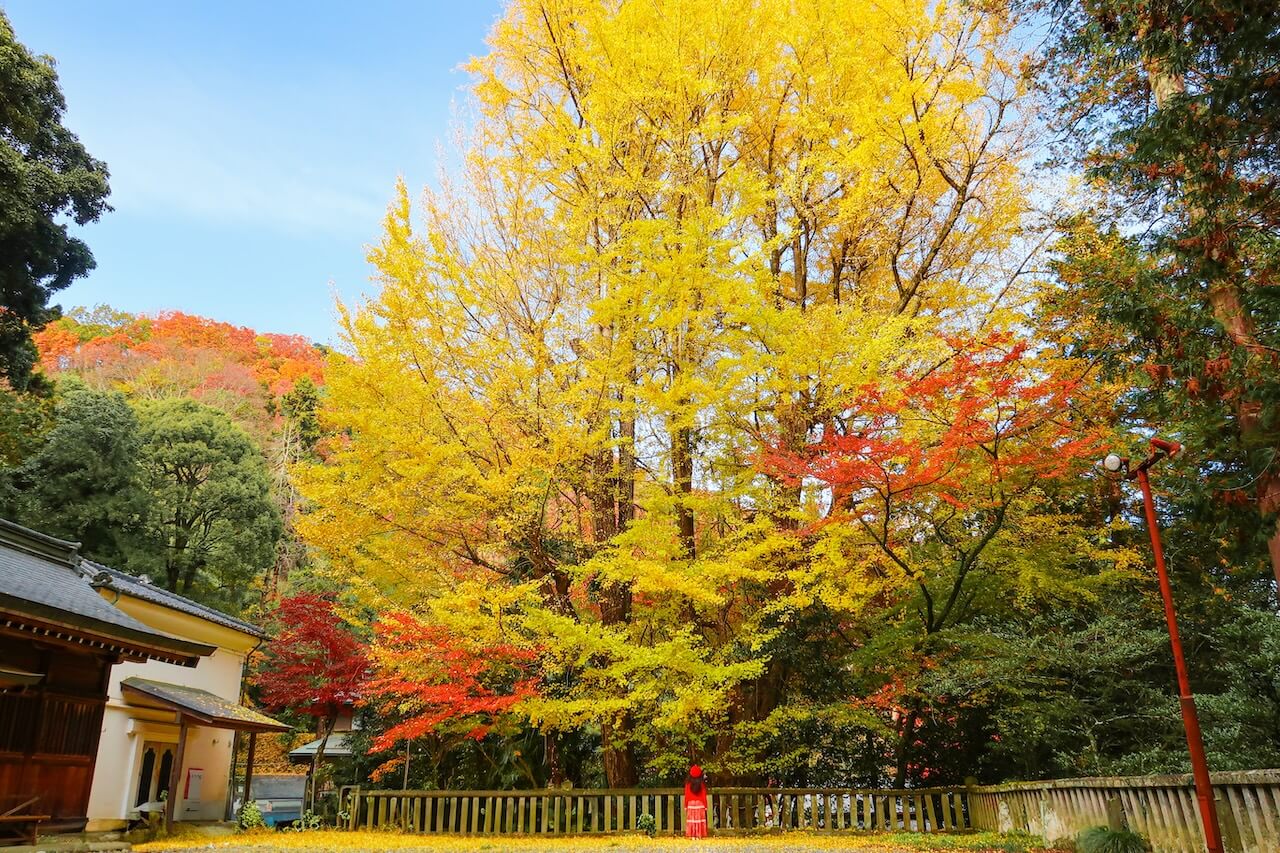
In autumn, the surrounding foliage transforms into brilliant shades of red and gold, creating an enchanting backdrop. Quiet pathways lined with colorful ginkgo and maple trees invite visitors to slow down, reflect, and immerse themselves in the serene ambiance. Among its ancient trees, the majestic Hatakake Ginkgo is especially enchanting, standing 20 meters tall with a circumference of 7 meters and estimated to be 550 years old.
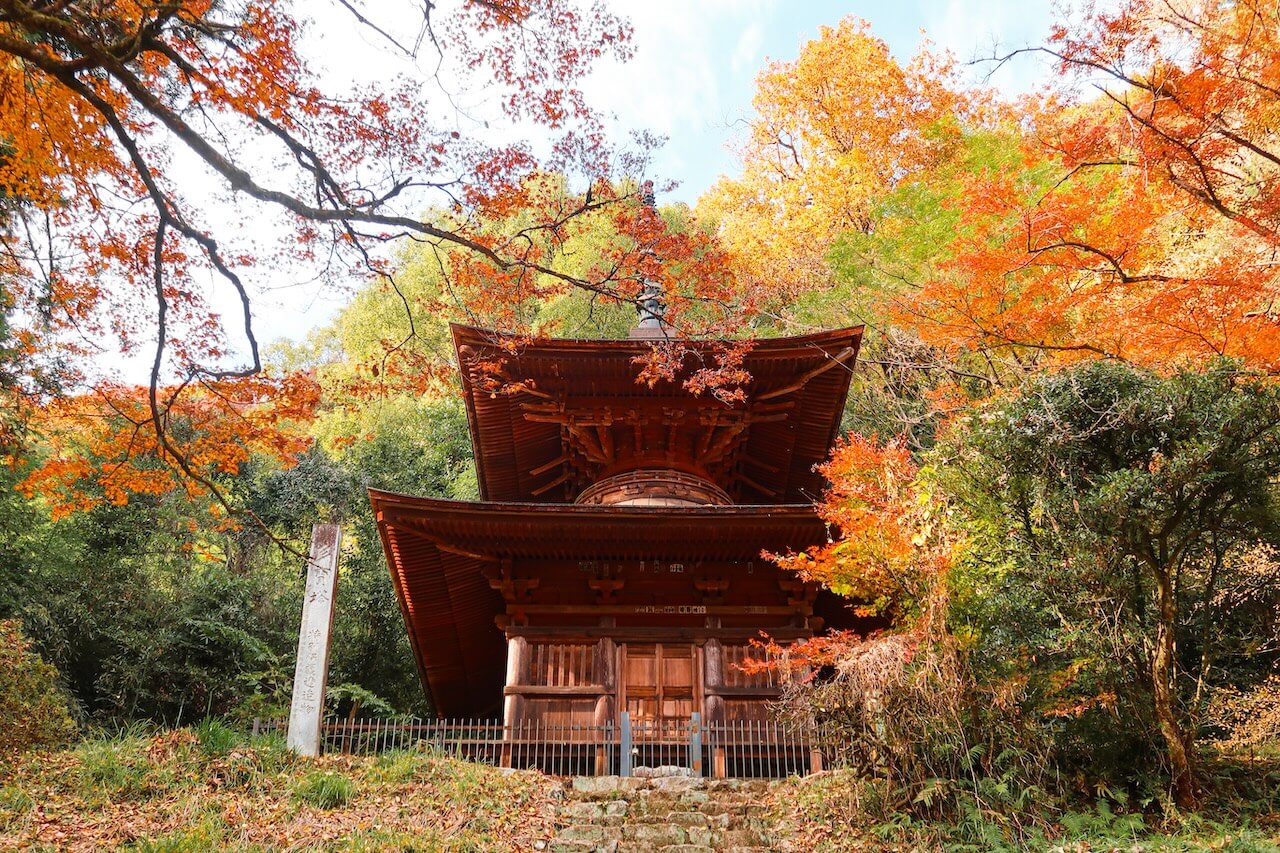
A short stroll from the main complex leads to the two-storied Tahoto Pagoda, a Nationally Designated Important Cultural Property built during the Edo period (1603-1868). In early December, this elegant wooden structure also becomes blanketed with beautiful autumn leaves.
For those seeking further wonder, a climb up the mountain slope reveals the mystical Kagami-iwa Rock, a geological marvel and Special Natural Monument. Formed 90 million years ago, its mirror-like rock face is steeped in legend, with stories saying it reflected the flames of the nearby Takasaki Castle’s fall, adding an air of historical intrigue to its natural beauty.
Address:
751, Oaza Ninomiya, Kamikawa-machi, Kodama-gun, Saitama
Access:
Take the Asahi Bus bound for Kamiizumi Sogo Shisho from either Honjo Station on the JR Takasaki Line or Tansho Station on the JR Hachiko Line. Get off at the Shinshuku Bus Stop and walk for 20 minutes.
English Website: https://saitama-supportdesk.com/spots/post-21858/
Seasonal Cuisine & Soba Ro - Countryside Dining in a Traditional Japanese House
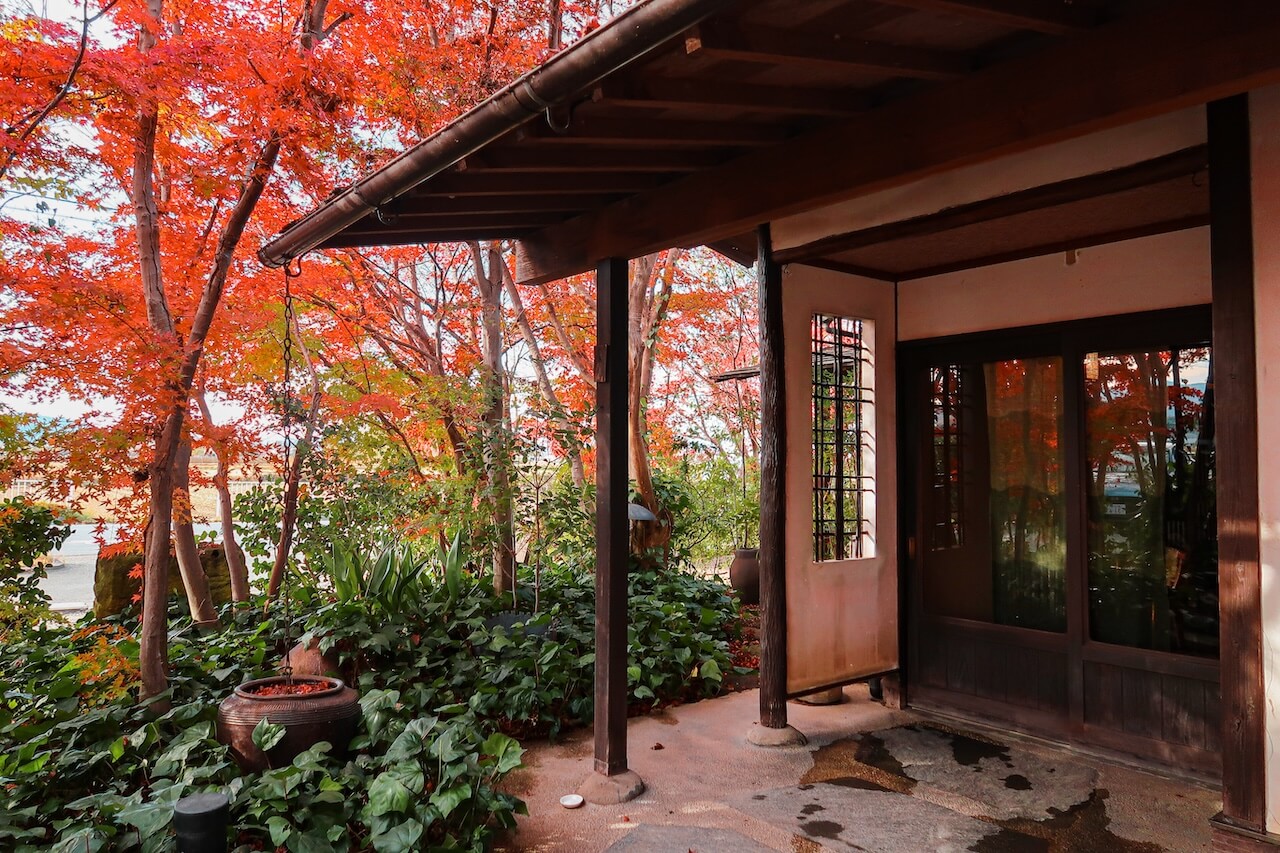
Seasonal Cuisine & Soba Ro is a hidden gem restaurant in the countryside of Kodama, renowned for its perfect blend of exquisite food, tranquil ambiance, and deep cultural charm. The restaurant is surrounded by rice fields and clusters of lush trees that create a secluded and idyllic atmosphere, reminiscent of Japan’s “satoyama” old world rural landscape.
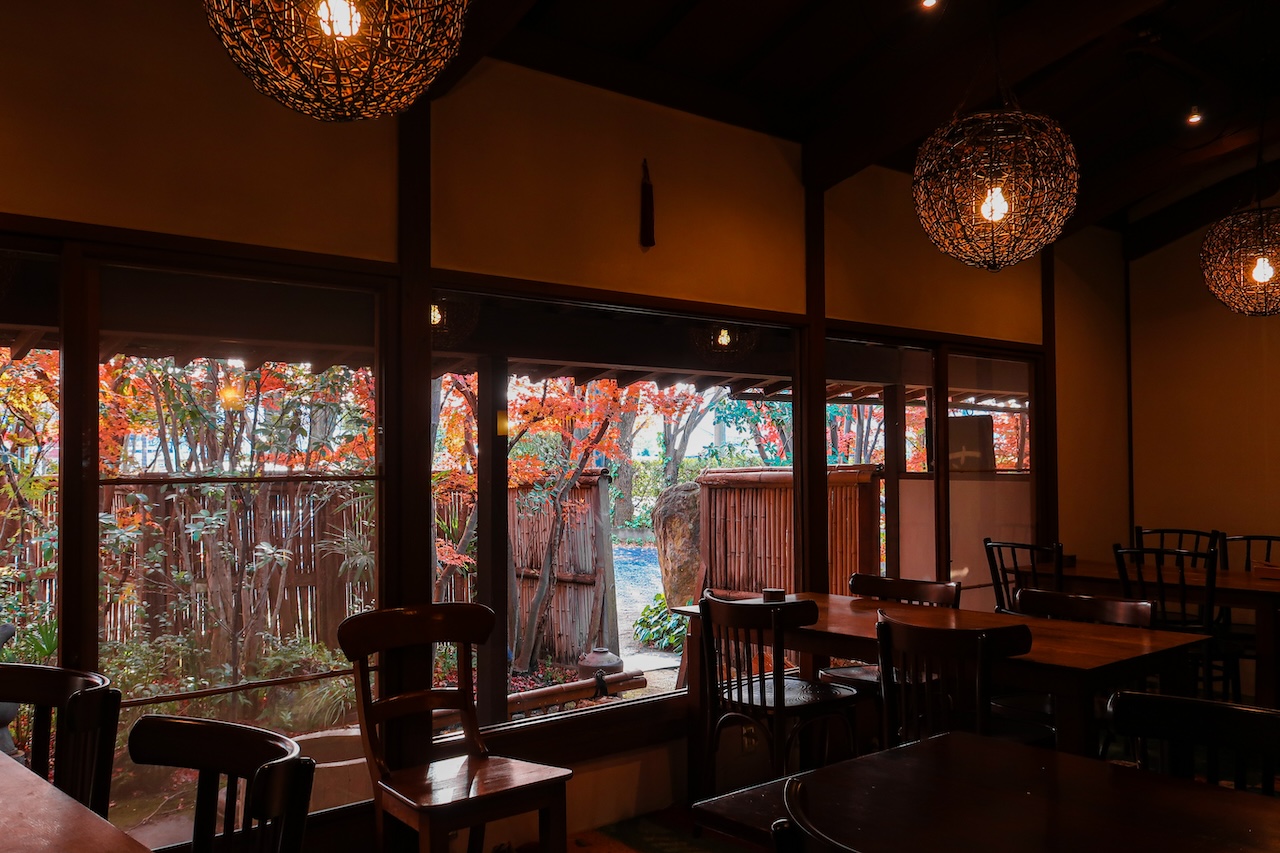
The building itself, a renovated traditional Japanese folkhouse, exudes a sense of nostalgia with its teahouse-inspired architecture. Inside, the spacious interior blends Japanese and Western design elements, offering a mix of tables, tatami rooms, and private spaces to enjoy your meal in comfort.
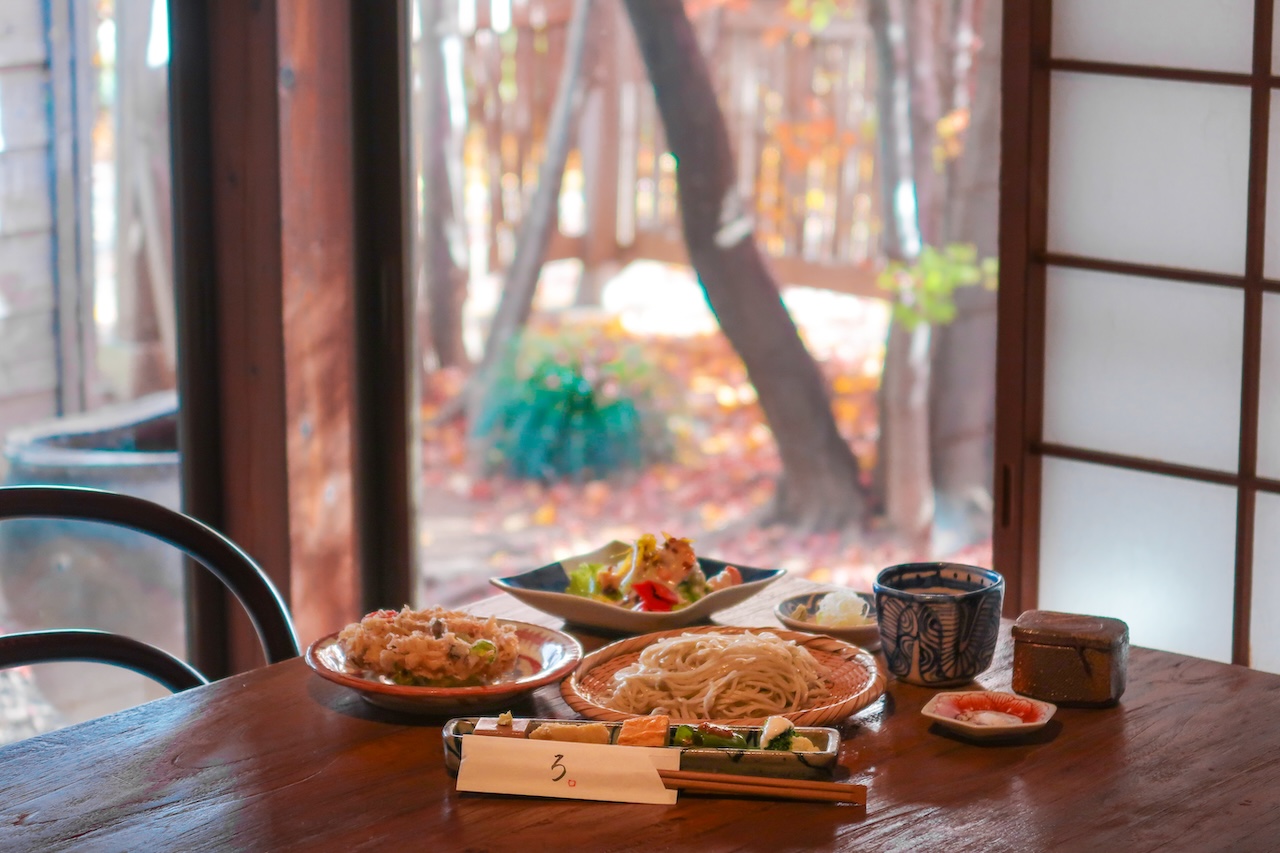
Large windows frame stunning views of the garden, which is particularly magical in autumn. The crimson foliage of maple trees reflects off the windows, veiling the building in vibrant colors and creating an otherworldly scene that invites slow, leisurely dining.
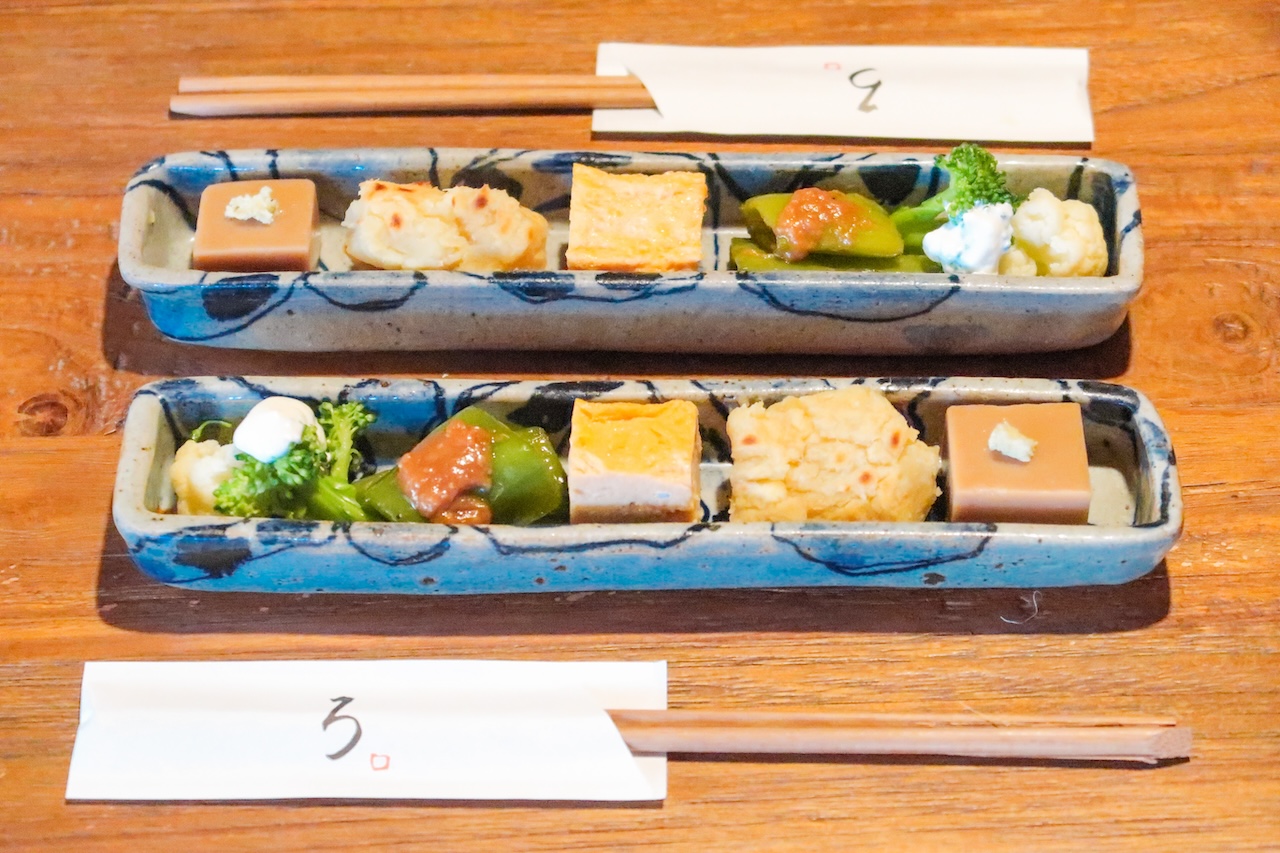
The menu is crafted with fresh, seasonal ingredients. The lunch course, priced at 2,300 yen, offers a progression of dishes highlighting the season’s bounty. Guests begin with an assortment of seasonal appetizers such as sweet potato salad, simmered manganji peppers, and sesame tofu, followed by a refreshing salad. The centerpiece is the soba noodles dish, with noodles renowned for their delicate aroma and satisfying texture and served with a perfectly balanced “tsuyu” dipping sauce.
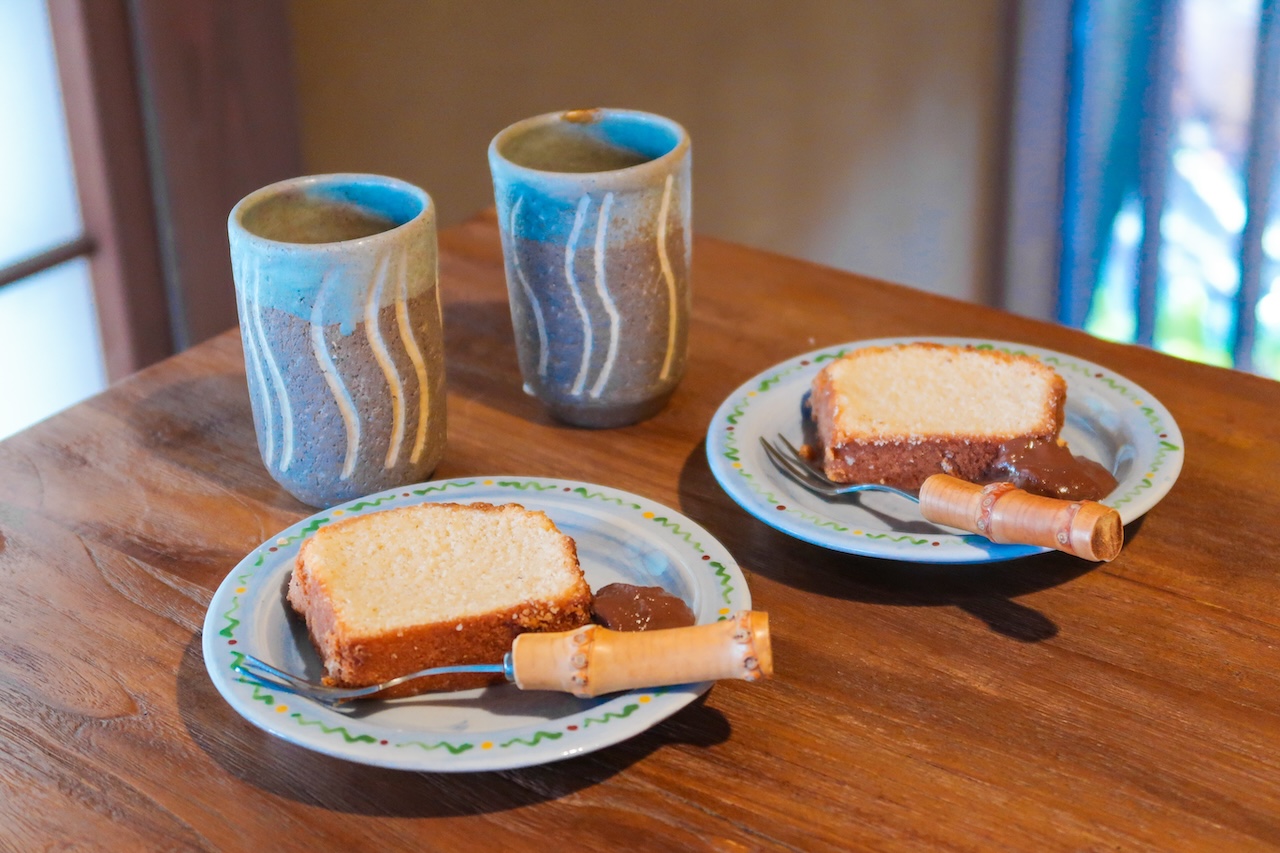
The meal also comes with crisp, golden seasonal tempura and concludes with a warm buckwheat pound cake, made from 100% buckwheat flour and garnished with chocolate sauce. Every element of the menu is a testament to the restaurant’s emphasis on simplicity and quality!
Address:
1346-1, Kanaya, Kodama-cho, Honjo-shi, Saitama
Access:
20-minute walk from Kodama Station on the JR Hachiko Line
Fusahiro Japanese Sword Forge - Witness the Craftsmanship Behind Japanese Swords
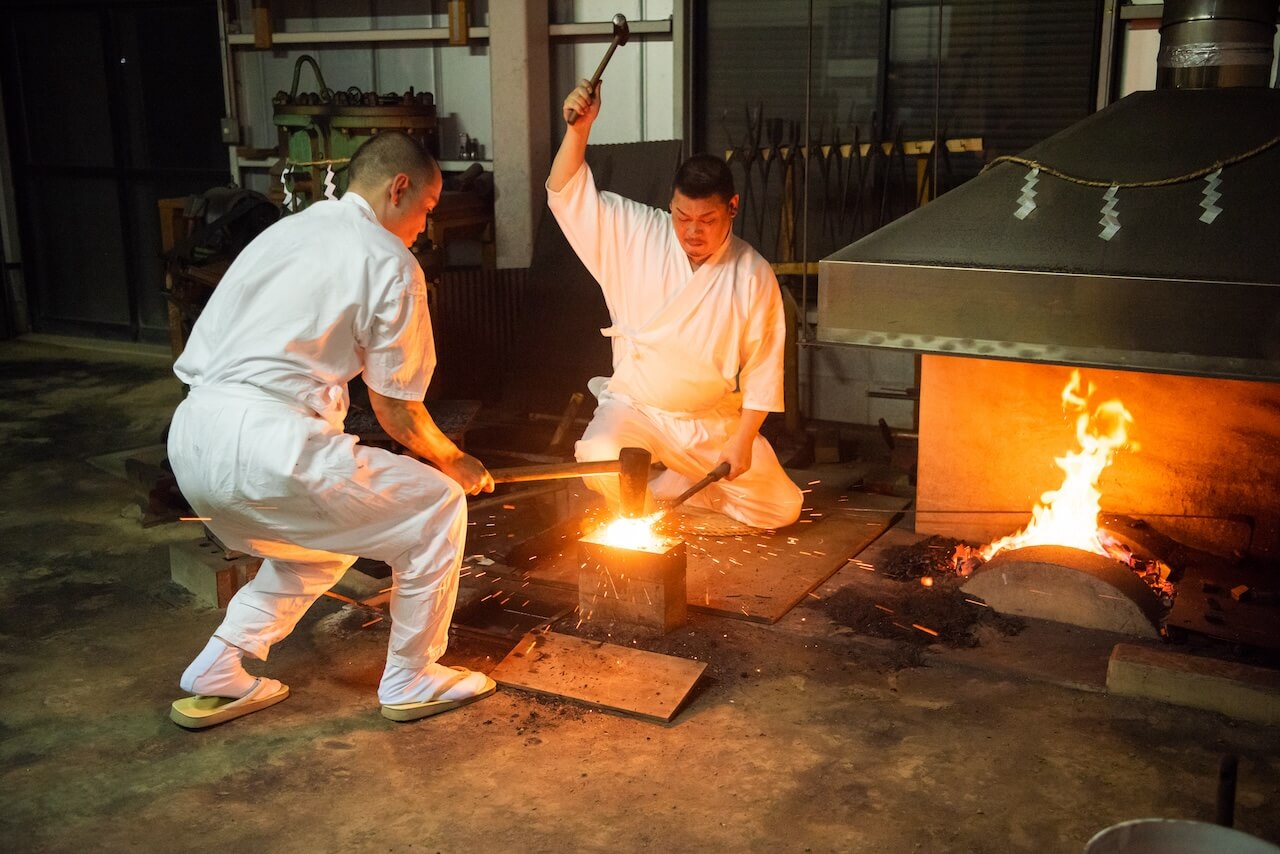
The Japanese sword is more than a weapon—it is a symbol of faith, authority, and artistry, believed to house the divine. Master swordsmiths have spent centuries perfecting their techniques, transforming “tamahagane” steel into blades of unmatched beauty and precision.
At Fusahiro Japanese Sword Forge in Kamikawa, Saitama Prefecture, you can step into the world of Japanese swordsmithing by meeting Shimojima Fusahiro, a prized swordsmith and board member of the All Japan Swordsmith Association.
Your journey begins at Honjo Waseda Station, where you’ll meet your interpreter guide. From there, a short taxi ride takes you to the forge, tucked away in a serene corner of Saitama. Upon arrival, Master Fusahiro himself will welcome you and lead you through the fascinating history, culture, and spiritual significance of Japanese swords.
You’ll then witness the mesmerizing process of forging a sword using tamahagane steel and see firsthand how raw materials are transformed into extraordinary blades. As part of the tour, you’ll also have the rare opportunity to hold an authentic Japanese sword, appreciating its craftsmanship, weight, and intricate details.
English Website: https://saitama-supportdesk.com/features/post-2145/
Chihara Kanamono Store - A Treasure Trove of Japanese Craftsmanship and Unique Souvenirs
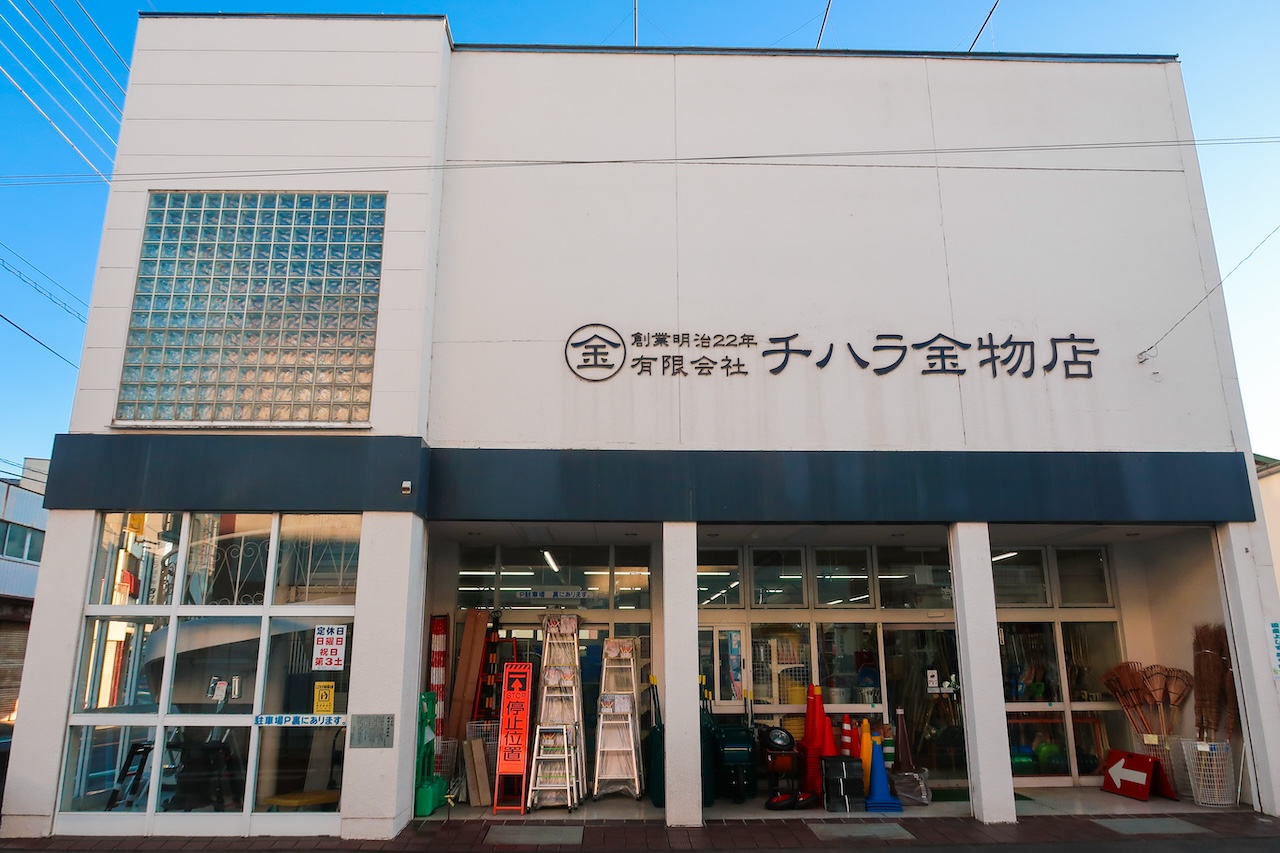
Located in the town of Kodama, Chihara Kanamono Store has been a cherished local shopping spot since its founding in 1889. Whether you’re a local or a traveler, stepping into the store feels like entering a treasure trove of Japanese craftsmanship.
The shop features everything from professional tools to expertly crafted household goods, all reflecting Japan’s artistry. It also offers handmade crafts and regional specialties from around Japan, making it an ideal place to find unique souvenirs or gifts. Visitors are greeted warmly by the friendly owner, whose passion for the store’s legacy adds a personal touch.
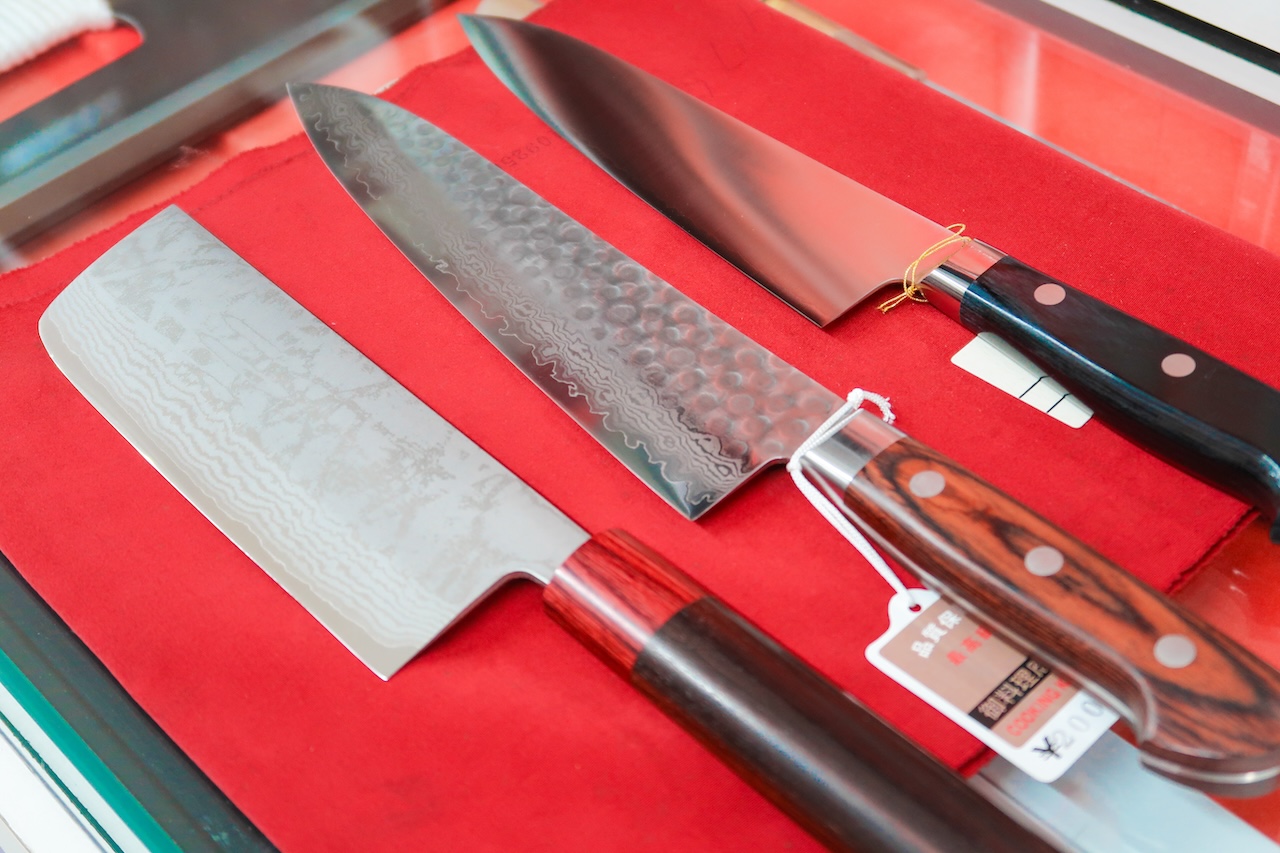
Among the many items for sale at Chihara Kanamono Store, there is an impressive selection of “hocho” Japanese kitchen knives. Renowned for their sharpness, balance, and craftsmanship, Japanese kitchen knives are a must-have for cooking enthusiasts.
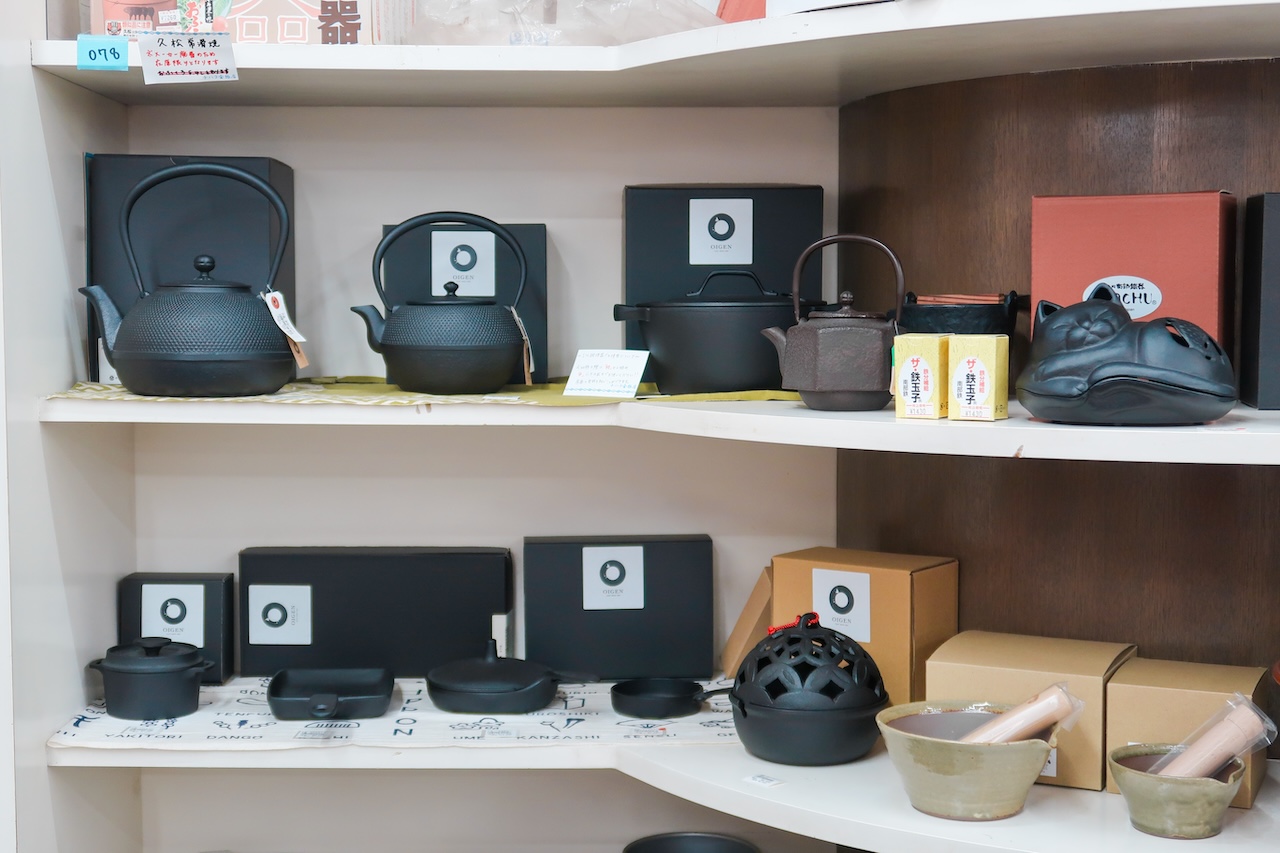
Prized items on display also include Nanbu Tekki ironware, a traditional craft that has been passed down since the Edo period (1603 – 1868). Nanbu Tekki is known for its rust-resistant properties, durability, and exceptional heat retention and distribution, making it ideal for pots, kettles, and other kitchen tools.
Not only are these items functional, but their intricate designs and polished finish make them beautiful additions to your everyday life.
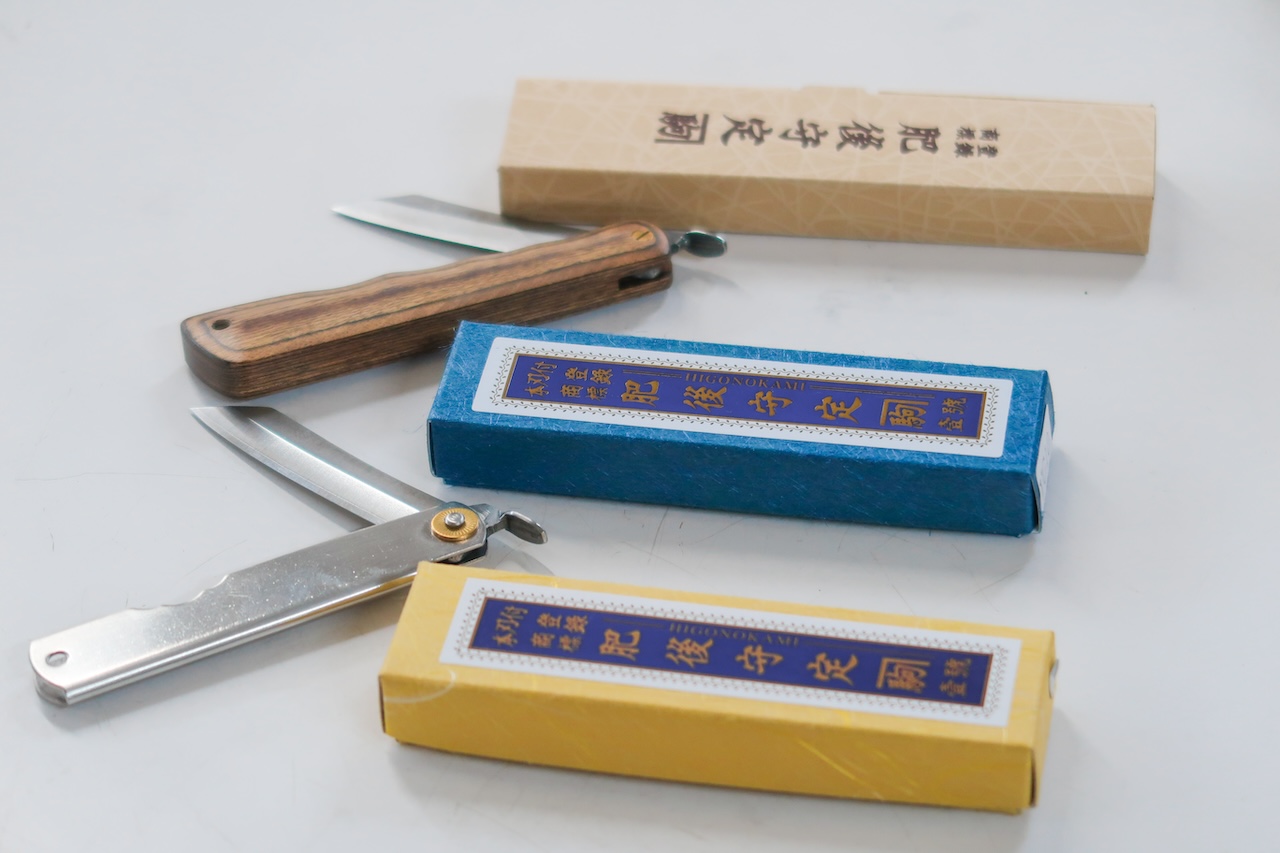
Finally, for those seeking a piece of traditional Japanese ingenuity, the store’s “higonokami” folding knives are an absolute gem. These compact knives feature a simple, functional design that has been loved for generations. Originally used by craftsmen and workers for everyday tasks, higonokami knives are now treasured for their practicality and timeless appeal. Here you’ll find a pocket-sized version that’s lightweight and easy to carry, making them an excellent souvenir or gift for anyone who appreciates the combination of utility and heritage.
Address: 151, Kodama, Kodama-cho, Honjo-shi, Saitama
Access: 5-minute walk from Kodama Station on the JR Hachiko Line
Kamikawa and Kodama: A Serene Escape Near Tokyo
The charming towns of Kamikawa and Kodama make for an unforgettable escape into Japan’s traditions and nature. From the rare winter cherry blossoms of Jomine Park to the historic Kanasana Shrine and hands-on experiences at Yamaki Brewery, this serene region harmoniously blends culture, craftsmanship, amazing food, and stunning landscapes. Located just 80 kilometers from Tokyo, it’s the perfect destination to experience the authentic side of Japan.
